



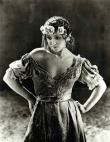
2 February
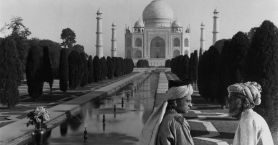 Shiraz (Dir. Franz Osten, 1928) (Screening format – DCP, 97mins) Based on a play by Indian author Niranjan Pal, Shiraz tells the fictionalised love story of the 17th-century princess who inspired the construction of the Taj Mahal. It was directed by Germany’s Franz Osten, one of at least 17 films he made in India between 1925 and 1939, best known of which are The Light of
Shiraz (Dir. Franz Osten, 1928) (Screening format – DCP, 97mins) Based on a play by Indian author Niranjan Pal, Shiraz tells the fictionalised love story of the 17th-century princess who inspired the construction of the Taj Mahal. It was directed by Germany’s Franz Osten, one of at least 17 films he made in India between 1925 and 1939, best known of which are The Light of  Asia (1925) and A Throw of Dice (1929). Shot entirely on location in India with an all-Indian cast, it features lavish costumes and gorgeous settings – all the more impressive in this restoration by the BFI National Archive with specially-commisioned score. The film was the brainchild of producer Himansu Rai, who also stars as humble potter Shiraz, who follows his childhood sweetheart (Enakshi Rama Rau) when she’s sold by slave traders to the future emperor (Charu Roy).Upon its release Shiraz was a considerable critical and
Asia (1925) and A Throw of Dice (1929). Shot entirely on location in India with an all-Indian cast, it features lavish costumes and gorgeous settings – all the more impressive in this restoration by the BFI National Archive with specially-commisioned score. The film was the brainchild of producer Himansu Rai, who also stars as humble potter Shiraz, who follows his childhood sweetheart (Enakshi Rama Rau) when she’s sold by slave traders to the future emperor (Charu Roy).Upon its release Shiraz was a considerable critical and  popular success and received rave reviews when the restored version was screened at last year’s London Film Festival. Find out more at silentfilm.org. With Anoushka Shankar recorded score. BFI Southbank, London. Link Also screens at this same location on 2 Feb, 3 Feb (x3), 4 Feb (x3), 5 Feb (x3), 6 Feb (x3), 7 Feb (x2), 8 Feb (x3), 9 Feb (x2), 10 Feb (x3), 11 Feb (x3), 12 Feb, 13 Feb (x2), 14 Feb, 15 Feb (x2).
popular success and received rave reviews when the restored version was screened at last year’s London Film Festival. Find out more at silentfilm.org. With Anoushka Shankar recorded score. BFI Southbank, London. Link Also screens at this same location on 2 Feb, 3 Feb (x3), 4 Feb (x3), 5 Feb (x3), 6 Feb (x3), 7 Feb (x2), 8 Feb (x3), 9 Feb (x2), 10 Feb (x3), 11 Feb (x3), 12 Feb, 13 Feb (x2), 14 Feb, 15 Feb (x2).
3 February
 Around India With A Movie Camera (Dir. Various) (Screening format – DCP, 76 mins) Archive footage tells the emotionally-resonant story of life across India pre-1947. Drawn exclusively from the BFI National Archive, Around India features some of the earliest surviving film from India as well as gorgeous travelogues, intimate home movies and newsreels from British, French and Indian filmmakers. Taking in Maharajas and Viceroys, fakirs and farmhands and personalities such as Sabu and Gandhi, the film explores not only the people and places of over 70 years ago, but asks us to engage with broader themes of a shared history, shifting perspectives in the lead up to Indian independence and the ghosts of the past. Around India boasts a superb new score that fuses western and Indian music from composer and sarod player Soumik Datta. With recorded soundtrack. BFI Southbank, London. Link Also screens at this same venue on 4, 5, 7, 9 and 11 Feb.
Around India With A Movie Camera (Dir. Various) (Screening format – DCP, 76 mins) Archive footage tells the emotionally-resonant story of life across India pre-1947. Drawn exclusively from the BFI National Archive, Around India features some of the earliest surviving film from India as well as gorgeous travelogues, intimate home movies and newsreels from British, French and Indian filmmakers. Taking in Maharajas and Viceroys, fakirs and farmhands and personalities such as Sabu and Gandhi, the film explores not only the people and places of over 70 years ago, but asks us to engage with broader themes of a shared history, shifting perspectives in the lead up to Indian independence and the ghosts of the past. Around India boasts a superb new score that fuses western and Indian music from composer and sarod player Soumik Datta. With recorded soundtrack. BFI Southbank, London. Link Also screens at this same venue on 4, 5, 7, 9 and 11 Feb.
 London Symphony (Dir. Alex Barrett, UK, 2017) (Screening format – not known) London Symphony is a brand new silent film – a city symphony – which offers a poetic journey through London, a cosmopolitan city facing a challenge to its identity in the current political climate. It is an artistic portrait of the city as it stands today, and a celebration of its culture and diversity. Find out more at londonsymphfilm.com . With recorded James McWilliam soundtrack. Presented as part of the UK Independent Film Festival. The Fleapit Cinema Club, Westerham, Kent Link
London Symphony (Dir. Alex Barrett, UK, 2017) (Screening format – not known) London Symphony is a brand new silent film – a city symphony – which offers a poetic journey through London, a cosmopolitan city facing a challenge to its identity in the current political climate. It is an artistic portrait of the city as it stands today, and a celebration of its culture and diversity. Find out more at londonsymphfilm.com . With recorded James McWilliam soundtrack. Presented as part of the UK Independent Film Festival. The Fleapit Cinema Club, Westerham, Kent Link
4 February
 Double Trouble: Early Female Comedy Double Acts (Dir. Various) A fine compilation of comedies celebrating rebellious damsels of destruction. Calling all lady hellions! Meet your silent and early-sound era kindred spirits in this compilation of comedies that celebrates the overlooked damsels of destruction – rebellious double acts like Anita Garvin and Marion Byron or the Tilly Girls – who, over a century ago, were ripping up the female-behaviour rulebook on the big screen. After all, sometimes you and your bestie just need to throw ice-cream all over the place, cause havoc on a train with your pet monkey or take a fire-engine for a joyride, right? With live piano accompaniment. BFI Southbank, London Link
Double Trouble: Early Female Comedy Double Acts (Dir. Various) A fine compilation of comedies celebrating rebellious damsels of destruction. Calling all lady hellions! Meet your silent and early-sound era kindred spirits in this compilation of comedies that celebrates the overlooked damsels of destruction – rebellious double acts like Anita Garvin and Marion Byron or the Tilly Girls – who, over a century ago, were ripping up the female-behaviour rulebook on the big screen. After all, sometimes you and your bestie just need to throw ice-cream all over the place, cause havoc on a train with your pet monkey or take a fire-engine for a joyride, right? With live piano accompaniment. BFI Southbank, London Link
 Metropolis (Dir. Fritz Lang, 1927) (Screening format –not known , 149 mins ) Made in Germany during the Weimar period, Metropolis is set in a futuristic urban dystopia and follows the
Metropolis (Dir. Fritz Lang, 1927) (Screening format –not known , 149 mins ) Made in Germany during the Weimar period, Metropolis is set in a futuristic urban dystopia and follows the  attempts of Freder (Gustav Frohlich), the wealthy son of the city’s ruler, and Maria (Brigitte Helm), a poor worker, to overcome the vast gulf separating the classes of their city. Filming took place in 1925 at a cost of approximately five million Reichmarks, making it the most expensive film ever released up to that point. It is regarded as a pioneering work of science fiction and is among the most influential films of all time. Following its world premiere in 1927, half an hour was cut from Fritz Lang’s masterpiece and lost to the world. Eighty years later a spectacular discovery was made when the footage was found in a small, dusty museum in Buenos Aires. The film was then painstakingly reconstructed and digitally restored so that at last audiences could see the iconic futuristic fairy tale as Lang had envisioned it. Find out more at silentfilm.org. With live accompaniment by the Aylesbury Symphony Orchestra conducted by Ben Palmer and performing the Gottfried Huppertz score for the film. Aylesbury Vale Academy, Bucks. Link
attempts of Freder (Gustav Frohlich), the wealthy son of the city’s ruler, and Maria (Brigitte Helm), a poor worker, to overcome the vast gulf separating the classes of their city. Filming took place in 1925 at a cost of approximately five million Reichmarks, making it the most expensive film ever released up to that point. It is regarded as a pioneering work of science fiction and is among the most influential films of all time. Following its world premiere in 1927, half an hour was cut from Fritz Lang’s masterpiece and lost to the world. Eighty years later a spectacular discovery was made when the footage was found in a small, dusty museum in Buenos Aires. The film was then painstakingly reconstructed and digitally restored so that at last audiences could see the iconic futuristic fairy tale as Lang had envisioned it. Find out more at silentfilm.org. With live accompaniment by the Aylesbury Symphony Orchestra conducted by Ben Palmer and performing the Gottfried Huppertz score for the film. Aylesbury Vale Academy, Bucks. Link
6 February
 Underground (Dir. Anthony Asquith, GB, 1928) (Screening format – not known, 84 mins) In 1920s London, during a normal hectic day on the Underground, mild mannered Northern Line porter Bill (Brian Aherne) falls for shop worker Nell (Elissa Lndi). But their relationship is threatened by power station worker Burt (Cyril McLaglan) who also has eyes for Nell. Consumed
Underground (Dir. Anthony Asquith, GB, 1928) (Screening format – not known, 84 mins) In 1920s London, during a normal hectic day on the Underground, mild mannered Northern Line porter Bill (Brian Aherne) falls for shop worker Nell (Elissa Lndi). But their relationship is threatened by power station worker Burt (Cyril McLaglan) who also has eyes for Nell. Consumed 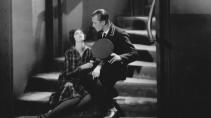 by jealousy, Burt plots to discredit Bill with a plan that results in a daring chase through London’s underground and across rooftops of the city. Although Underground was only Asquith‘s second film he handles the melodramatic story with confidence and great sophistication. Underground is a rare study of 1920s working-class London, and offers a fascinating and historically interesting glimpse of its public transport system. Find out more at screenonline.org.uk . With live piano accompaniment from Neil Brand. City University, London Link
by jealousy, Burt plots to discredit Bill with a plan that results in a daring chase through London’s underground and across rooftops of the city. Although Underground was only Asquith‘s second film he handles the melodramatic story with confidence and great sophistication. Underground is a rare study of 1920s working-class London, and offers a fascinating and historically interesting glimpse of its public transport system. Find out more at screenonline.org.uk . With live piano accompaniment from Neil Brand. City University, London Link
7 February
 The Bride of Glomdal (aka Glomdalsbruden) (Dir. Carl Theodor Dreyer. Nor., 1926). (Screening format – not known, 115 mins) The rural locations provide a beautiful setting for this story of Tore, a young farmer, who is determined to build up his family’s dilapidated farm and win the hand of lovely neighbour Berit, who is promised in marriage to another. The Bride of Glomdal immediately followed Dreyer’s early important work Master of the House (Denmark 1925) and preceded his move to France, where his international reputation was made with The Passion of Joan of Arc (1928). To accommodate the theatre schedules of his actors, and to embellish what he believed to be the relatively slender plot threads of the original novel written by Jacob Breda Bull, Dreyer uncharacteristically shot more or less off-the-cuff, albeit with a prepared list of scenes, throughout the summer of 1925. The Bride of Glomdal was among the highlights of the recent Pordenone Silent Film Festival. Find out more at imdb.com . Presented by the Kennington Bioscope. With live piano accompaniment. Cinema Museum, Lambeth, London Link
The Bride of Glomdal (aka Glomdalsbruden) (Dir. Carl Theodor Dreyer. Nor., 1926). (Screening format – not known, 115 mins) The rural locations provide a beautiful setting for this story of Tore, a young farmer, who is determined to build up his family’s dilapidated farm and win the hand of lovely neighbour Berit, who is promised in marriage to another. The Bride of Glomdal immediately followed Dreyer’s early important work Master of the House (Denmark 1925) and preceded his move to France, where his international reputation was made with The Passion of Joan of Arc (1928). To accommodate the theatre schedules of his actors, and to embellish what he believed to be the relatively slender plot threads of the original novel written by Jacob Breda Bull, Dreyer uncharacteristically shot more or less off-the-cuff, albeit with a prepared list of scenes, throughout the summer of 1925. The Bride of Glomdal was among the highlights of the recent Pordenone Silent Film Festival. Find out more at imdb.com . Presented by the Kennington Bioscope. With live piano accompaniment. Cinema Museum, Lambeth, London Link
9 February
 London Symphony (Dir. Alex Barrett, UK, 2017) (Screening format – not known) London Symphony is a brand new silent film – a city symphony – which offers a poetic journey through London, a cosmopolitan city facing a challenge to its identity in the current political climate. It is an artistic portrait of the city as it stands today, and a celebration of its culture and diversity. Find out more at londonsymphfilm.com . With recorded James McWilliam soundtrack. The Horsebridge Centre, Whitstable, Kent Link
London Symphony (Dir. Alex Barrett, UK, 2017) (Screening format – not known) London Symphony is a brand new silent film – a city symphony – which offers a poetic journey through London, a cosmopolitan city facing a challenge to its identity in the current political climate. It is an artistic portrait of the city as it stands today, and a celebration of its culture and diversity. Find out more at londonsymphfilm.com . With recorded James McWilliam soundtrack. The Horsebridge Centre, Whitstable, Kent Link
11 February
 The Guns Of Loos (Dir. Sinclair Hill, GB, 1928) (Screening format – not known, 84 mins) The Guns of Loos marked a bold new approach to depicting the war on screen. Previous British war films concentrated on highly detailed, documentary-style reconstructions of particular battles, with little attempt at drama or character. For this film, the striking recreations of the conflict at Loos provide the backdrop to an intense psychological drama about a factory owner whose dictatorial manner and apparent nerves of steel quickly unravel when faced with the horrors of war. Combining strong performances with outstanding cinematography, the film received rave reviews on its release in 1928, with many critics declaring it the best war film ever made. Find out more at ithankyouarthur.blogspot. With live musical accompaniment by Stephen Horne and Martin Pyne. Auditorium, Turner Sims, University of Southampton, Southampton Link
The Guns Of Loos (Dir. Sinclair Hill, GB, 1928) (Screening format – not known, 84 mins) The Guns of Loos marked a bold new approach to depicting the war on screen. Previous British war films concentrated on highly detailed, documentary-style reconstructions of particular battles, with little attempt at drama or character. For this film, the striking recreations of the conflict at Loos provide the backdrop to an intense psychological drama about a factory owner whose dictatorial manner and apparent nerves of steel quickly unravel when faced with the horrors of war. Combining strong performances with outstanding cinematography, the film received rave reviews on its release in 1928, with many critics declaring it the best war film ever made. Find out more at ithankyouarthur.blogspot. With live musical accompaniment by Stephen Horne and Martin Pyne. Auditorium, Turner Sims, University of Southampton, Southampton Link
11 – 12 February
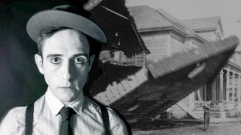 When You Fall Down Inspired by the career of Buster Keaton, James Dangerfield has created a musical that explores the silent star’s life and career. The show follows Keaton’s life from his first film-making experiences in 1917 to his signing on with MGM 11 years later. When You Fall Down previewed last year in London, and received its premiere at the 2017 International Buster Keaton Festival in Michigan, USA. Featuring original music and songs, join us for this show celebrating “The Great Stone Face” and the magic of movie-making. Hope Theatre, Islington, London Link
When You Fall Down Inspired by the career of Buster Keaton, James Dangerfield has created a musical that explores the silent star’s life and career. The show follows Keaton’s life from his first film-making experiences in 1917 to his signing on with MGM 11 years later. When You Fall Down previewed last year in London, and received its premiere at the 2017 International Buster Keaton Festival in Michigan, USA. Featuring original music and songs, join us for this show celebrating “The Great Stone Face” and the magic of movie-making. Hope Theatre, Islington, London Link
13 February
 Dawn (Dir. Herbert Wilcox, GB, 1928) (Screening format – not known, 80 mins) One of the greatest British martyrs of World War I, Edith Cavell (1865-1915) was a distinguished nurse who moved to Brussels in 1907 to help establish an independent medical institution outside the control of the established churches. After war was declared in 1914 she became actively involved in helping to smuggle British fugitives out of Belgium, for which she was eventually caught, tried and sentenced to death. In the first of two adaptations of the Cavell story director Herbert Wilcox opted to stage the events primarily in the form of an atmospherically-shot suspense thriller, with Sybil Thorndike in the title role, one of her most memorable film appearances. Find out more at wikipedia.org. With live musical accompaniment by composer and pianist Andrew Fisher plus ensemble. Auditorium, Turner Sims, University of Southampton, Southampton Link
Dawn (Dir. Herbert Wilcox, GB, 1928) (Screening format – not known, 80 mins) One of the greatest British martyrs of World War I, Edith Cavell (1865-1915) was a distinguished nurse who moved to Brussels in 1907 to help establish an independent medical institution outside the control of the established churches. After war was declared in 1914 she became actively involved in helping to smuggle British fugitives out of Belgium, for which she was eventually caught, tried and sentenced to death. In the first of two adaptations of the Cavell story director Herbert Wilcox opted to stage the events primarily in the form of an atmospherically-shot suspense thriller, with Sybil Thorndike in the title role, one of her most memorable film appearances. Find out more at wikipedia.org. With live musical accompaniment by composer and pianist Andrew Fisher plus ensemble. Auditorium, Turner Sims, University of Southampton, Southampton Link
18 February
 The Unknown (Dir. Tod Browning, US, 1927) (Screening format – not known, 63 mins) To escape the police, Alonzo, who has two thumbs on one hand, poses in a sideshow as an armless wonder. He falls in love with Estrellita, and when detected by her father, he kills him. Then, discovering that the girl abhors the touch of a man’s hand, he has both his arms amputated. Returning, he finds to his dismay that she has fallen in love with Malabar, the strong-man. Is all lost for Alonzo….The Unknown was the sixth of ten collaborations between Chaney and director Tod Browning. Its circus theme was a favorite of Browning’s, both on and off screen. Chaney was already “The Man of a Thousand Faces” when he appeared in The Unknown but in this film Chaney didn’t need to rely on heavy make-up to transform himself for a role. For The Unknown, Chaney reported, “I contrived to make myself look like an armless man, not simply to shock and horrify you but merely to bring to the screen a dramatic story of an armless man.” Find out more at moviessilently.com . With live musical accompaniment by electro-improvisational group Grok. Genesis Cinema, London Link
The Unknown (Dir. Tod Browning, US, 1927) (Screening format – not known, 63 mins) To escape the police, Alonzo, who has two thumbs on one hand, poses in a sideshow as an armless wonder. He falls in love with Estrellita, and when detected by her father, he kills him. Then, discovering that the girl abhors the touch of a man’s hand, he has both his arms amputated. Returning, he finds to his dismay that she has fallen in love with Malabar, the strong-man. Is all lost for Alonzo….The Unknown was the sixth of ten collaborations between Chaney and director Tod Browning. Its circus theme was a favorite of Browning’s, both on and off screen. Chaney was already “The Man of a Thousand Faces” when he appeared in The Unknown but in this film Chaney didn’t need to rely on heavy make-up to transform himself for a role. For The Unknown, Chaney reported, “I contrived to make myself look like an armless man, not simply to shock and horrify you but merely to bring to the screen a dramatic story of an armless man.” Find out more at moviessilently.com . With live musical accompaniment by electro-improvisational group Grok. Genesis Cinema, London Link
21 February
 Films From The Archive: Forgotten Women Of The 1930s (Dir. Various) (Screening format – 16/35mm, 60mins) Marking the centenary of the Representation of the People Act (when some women were granted the vote) and with today’s headlines dominated by the #MeToo movement and gender politics in the film industry, this Queen Mary Grad Fest event will rediscover some of cinema’s forgotten women of the 1930s. The hour-long programme of short films covers a wide range of styles from the 1930s period and includes: Lotte Reiniger, Harlequin(1931); Anstey, A. Elton [and Ruby Grierson uncredited], Housing Problems(1935); Len Lye, Colour Box (1935); Len Lye, Kaleidoscope(1935); and, Lotte Reiniger, Carmen (1933). Close-up Cinema, London E1 Link
Films From The Archive: Forgotten Women Of The 1930s (Dir. Various) (Screening format – 16/35mm, 60mins) Marking the centenary of the Representation of the People Act (when some women were granted the vote) and with today’s headlines dominated by the #MeToo movement and gender politics in the film industry, this Queen Mary Grad Fest event will rediscover some of cinema’s forgotten women of the 1930s. The hour-long programme of short films covers a wide range of styles from the 1930s period and includes: Lotte Reiniger, Harlequin(1931); Anstey, A. Elton [and Ruby Grierson uncredited], Housing Problems(1935); Len Lye, Colour Box (1935); Len Lye, Kaleidoscope(1935); and, Lotte Reiniger, Carmen (1933). Close-up Cinema, London E1 Link
 City Lights (Dir. Charlie Chaplin, US, 1931) (Screening format – DCP, 84mins) Subtitled ‘A Comedy in Pantomime’, City Lights is viewed by many as Chaplin’s greatest film – a ‘silent film’ released three years into the talkie era. The melodramatic film, a combination of pathos, slapstick and comedy, was a tribute to the art of body language and pantomime – a lone hold-out against the assault of talking film. The writer-director-star achieved
City Lights (Dir. Charlie Chaplin, US, 1931) (Screening format – DCP, 84mins) Subtitled ‘A Comedy in Pantomime’, City Lights is viewed by many as Chaplin’s greatest film – a ‘silent film’ released three years into the talkie era. The melodramatic film, a combination of pathos, slapstick and comedy, was a tribute to the art of body language and pantomime – a lone hold-out against the assault of talking film. The writer-director-star achieved 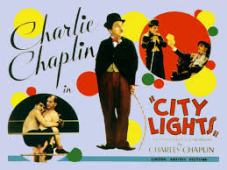 new levels of grace, in both physical comedy and dramatic poignancy, with this silent tale of a lovable vagrant falling for a young blind woman who sells flowers on the street (a magical Virginia Cherrill) and mistakes him for a millionaire. Though this Depression-era smash was made after the advent of sound, Chaplin remained steadfast in his love for the expressive beauty of the pre-talkie form. The result was the epitome of his art and the crowning achievement of silent comedy. Find out more at rogerebert.com. With Chaplin’s own recorded soundtrack. Prince Charles Cinema, London Link
new levels of grace, in both physical comedy and dramatic poignancy, with this silent tale of a lovable vagrant falling for a young blind woman who sells flowers on the street (a magical Virginia Cherrill) and mistakes him for a millionaire. Though this Depression-era smash was made after the advent of sound, Chaplin remained steadfast in his love for the expressive beauty of the pre-talkie form. The result was the epitome of his art and the crowning achievement of silent comedy. Find out more at rogerebert.com. With Chaplin’s own recorded soundtrack. Prince Charles Cinema, London Link
 The Extra Girl (Dir. F Richard Jones, US, 1923) (Screening format – 16mm, 68 mins) Hometown girl Sue Graham (Mabel Normand) wins a movie contest and goes to Hollywood when her parents forbid her to marry Dave Giddings (Ralph Graves), her father’s garage mechanic. Arriving in Hollywood, Sue finds that there is no work except in the wardrobe department. She falls into the clutches of an oil swindler named Hackett (Ramsey Wallace). When Sue’s parents lose their fortune to Hackett, Sue determines to recover the cash and get her man. Although plenty of Mabel Normand’s early shorts from Vitagraph, Biograph and, especially, Keystone, as well as the Hal Roach films from the end of her career (1927’s Should Men Walk Home has previously been screened at Kennington Bioscope) survive, this is a rare surviving example of one of her earlier features. Find out more at imdb.com . Presented by the Kennington Bioscope. Introduced by renowned film historian Kevin Brownlow. With live musical accompaniment. Cinema Museum, Lambeth, London Link
The Extra Girl (Dir. F Richard Jones, US, 1923) (Screening format – 16mm, 68 mins) Hometown girl Sue Graham (Mabel Normand) wins a movie contest and goes to Hollywood when her parents forbid her to marry Dave Giddings (Ralph Graves), her father’s garage mechanic. Arriving in Hollywood, Sue finds that there is no work except in the wardrobe department. She falls into the clutches of an oil swindler named Hackett (Ramsey Wallace). When Sue’s parents lose their fortune to Hackett, Sue determines to recover the cash and get her man. Although plenty of Mabel Normand’s early shorts from Vitagraph, Biograph and, especially, Keystone, as well as the Hal Roach films from the end of her career (1927’s Should Men Walk Home has previously been screened at Kennington Bioscope) survive, this is a rare surviving example of one of her earlier features. Find out more at imdb.com . Presented by the Kennington Bioscope. Introduced by renowned film historian Kevin Brownlow. With live musical accompaniment. Cinema Museum, Lambeth, London Link
22 February
 1918 – At Home, At War Neil Brand, writer, composer, broadcaster (BBC4’s So
1918 – At Home, At War Neil Brand, writer, composer, broadcaster (BBC4’s So
und of Cinema and Sound of Song) and World War I historian, uses the films, music and writings of the time to take his audience deeply into the experience of the serving soldier and his family at home 100 years ago. Battles, factory work, concert parties, cinema-going, the songs, laughter, highs and tragic lows of ordinary people spring to life through film, music and readings as Neil presents his unique vision of the century-old war and accompanies the films on the piano in his signature style. Auditorium, Turner Sims, University of Southampton, Southampton Link
23 February
 London Symphony (Dir. Alex Barrett, UK, 2017) (Screening format – not known) London Symphony is a brand new silent film – a city symphony – which offers a poetic journey through London, a cosmopolitan city facing a challenge to its identity in the current political climate. It is an artistic portrait of the city as it stands today, and a celebration of its culture and diversity. Find out more at londonsymphfilm.com . With recorded James McWilliam soundtrack. Southwark Cathederal, London Link
London Symphony (Dir. Alex Barrett, UK, 2017) (Screening format – not known) London Symphony is a brand new silent film – a city symphony – which offers a poetic journey through London, a cosmopolitan city facing a challenge to its identity in the current political climate. It is an artistic portrait of the city as it stands today, and a celebration of its culture and diversity. Find out more at londonsymphfilm.com . With recorded James McWilliam soundtrack. Southwark Cathederal, London Link
25 February
 The Pleasure Garden (Dir. Alfred Hitchcock, UK, 1925) (Screening format – not known, 75mins) Patsy (Virginia Valli), a chorus girl at the Pleasure Garden music hall helps down on her luck dancer Jill (Carmelita Geraghty) get a job in her show. But when Jill’s fiance Hugh (John Stuart) turns up, he and Patsy are drawn to each other. Meanwhile Jill is living the highlife and being courted by a rich prince. Jealousy! Madness! Murder! Alfred Hitchcock’s debut as a film director was this long-thought-to-be-lost and now restored brilliant hothouse silent melodrama. There is an early chance to spot all the later iconic Hitchcock motifs used here for the very first time. The very first shot shows chorus girls descending a spiral staircase just like the staircase shot in Vertigo, while a man uses opera glasses to better appreciate a dancer just as Jimmy Stewart uses them in Rear Window. Even the classic icy Hitchcock Blonde first appears here. Find out more at silentlondon.co.uk . With live piano accompaniment by Lillian Henley. Palace Cinema, Broadstairs, Kent Link
The Pleasure Garden (Dir. Alfred Hitchcock, UK, 1925) (Screening format – not known, 75mins) Patsy (Virginia Valli), a chorus girl at the Pleasure Garden music hall helps down on her luck dancer Jill (Carmelita Geraghty) get a job in her show. But when Jill’s fiance Hugh (John Stuart) turns up, he and Patsy are drawn to each other. Meanwhile Jill is living the highlife and being courted by a rich prince. Jealousy! Madness! Murder! Alfred Hitchcock’s debut as a film director was this long-thought-to-be-lost and now restored brilliant hothouse silent melodrama. There is an early chance to spot all the later iconic Hitchcock motifs used here for the very first time. The very first shot shows chorus girls descending a spiral staircase just like the staircase shot in Vertigo, while a man uses opera glasses to better appreciate a dancer just as Jimmy Stewart uses them in Rear Window. Even the classic icy Hitchcock Blonde first appears here. Find out more at silentlondon.co.uk . With live piano accompaniment by Lillian Henley. Palace Cinema, Broadstairs, Kent Link
 Quiet Please: Music Accompaniment For Silent Film Learn the secrets of traditional silent-film accompaniment in this hands-on workshop, which includes an overview of the history of period film music and an exploration of key historical influences and techniques. Find out how to replicate the sound effects used in early cinema and sync up your own live performance to film – you’ll soon discover that ‘silent’ film was anything but! Suitable for all instrumentalists grade 6+. Led by Emily O’Hara from The Lucky Dog Picturehouse. BFI Southbank, London Link
Quiet Please: Music Accompaniment For Silent Film Learn the secrets of traditional silent-film accompaniment in this hands-on workshop, which includes an overview of the history of period film music and an exploration of key historical influences and techniques. Find out how to replicate the sound effects used in early cinema and sync up your own live performance to film – you’ll soon discover that ‘silent’ film was anything but! Suitable for all instrumentalists grade 6+. Led by Emily O’Hara from The Lucky Dog Picturehouse. BFI Southbank, London Link
28 February
 Make More Noise: Suffragettes In Silent Film (Dir. Various, 1899-1917) (Screening format – DCP, 75mins) A selection of silent films from the BFI National Archive showing how suffragettes were portrayed on the cinema screen while their battles were still being waged on the streets outside. This fascinating compilation of 21 short films – with a specially commissioned recorded score by Lillian Henley – combines newsreels and documentaries with early comedies. Followed by a Q&A with Dr Katherine Bradley, historian and co-founder of Oxford International Women’s Day; Debbie Hollingsworth, trade union and women’s activist, Chair of OIWF; Katherine Connelly, author of ‘Sylvia Pankhurst: Suffragette, Socialist and Scourge of the Empire’; and Tracy Walsh (Chair), Programme Co-ordinator OIWF. Ultimate Picture Palace, Oxford Link
Make More Noise: Suffragettes In Silent Film (Dir. Various, 1899-1917) (Screening format – DCP, 75mins) A selection of silent films from the BFI National Archive showing how suffragettes were portrayed on the cinema screen while their battles were still being waged on the streets outside. This fascinating compilation of 21 short films – with a specially commissioned recorded score by Lillian Henley – combines newsreels and documentaries with early comedies. Followed by a Q&A with Dr Katherine Bradley, historian and co-founder of Oxford International Women’s Day; Debbie Hollingsworth, trade union and women’s activist, Chair of OIWF; Katherine Connelly, author of ‘Sylvia Pankhurst: Suffragette, Socialist and Scourge of the Empire’; and Tracy Walsh (Chair), Programme Co-ordinator OIWF. Ultimate Picture Palace, Oxford Link
NB. Whilst every effort has been taken to ensure that the information contained in these listings is accurate, silentfilmcalendar.org can take no responsibility for any errors or inaccuracies. You are strongly advised to confirm with the venue that the event remains as detailed, particularly if traveling any distance to attend.
